
Customer Projects vs. Internal Projects
Income Report
On this page: Summary ••• 1. Two Types of Projects ••• 2. Survey Results ••• 3. Discussion ••• 4. More Data ••• 5. Conclusions ••• 6. Acknowledgment

Summary
In 2018, a survey showed that in high-paying countries, project managers in customer projects are, on average, better paid than their colleagues in internal projects. In low-paying countries, project managers in internal projects were better paid.
This new study, 4 years and a global pandemic later, was performed to find out if this observation is still true.
Links
- This report:
Downloadable report - 2018 report:
Short online report – Detailed downloadable report
How to reference to this page
Project Business Foundation (2022) Income Report: Customer vs. Internal Projects, September [Online]. Available from: https://project-business.org/research/report-income-comparison-2022 (Accessed: ## #### 202#).

1. Two Types of Projects
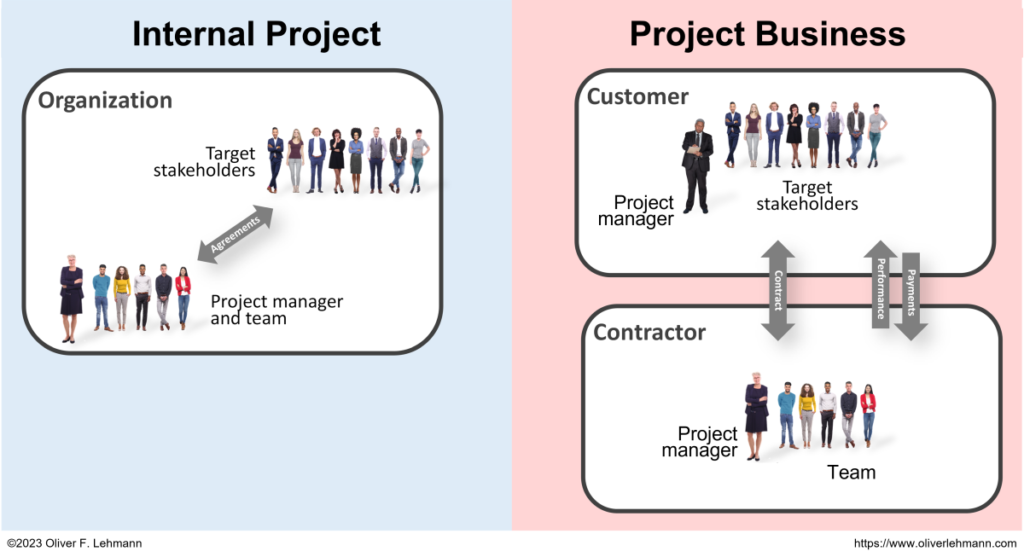
Internal Projects
The project is embedded inside the organization to bring about deliverables that the organization wants or needs. The project team and target stakeholders are inside the same entity.
Typically, Project managers in internal projects are responsible for managing cost centers.
Customer Projects
Project managers in customer projects are responsible for managing contractors’ profit centers as part of cross-corporate project business. They are hired on the contractor side to:
- Make the customer happy
- Make the project profitable
- Protect the contractor’s liquidity

2. The Survey: Which Project Managers Earn More?
Respondents
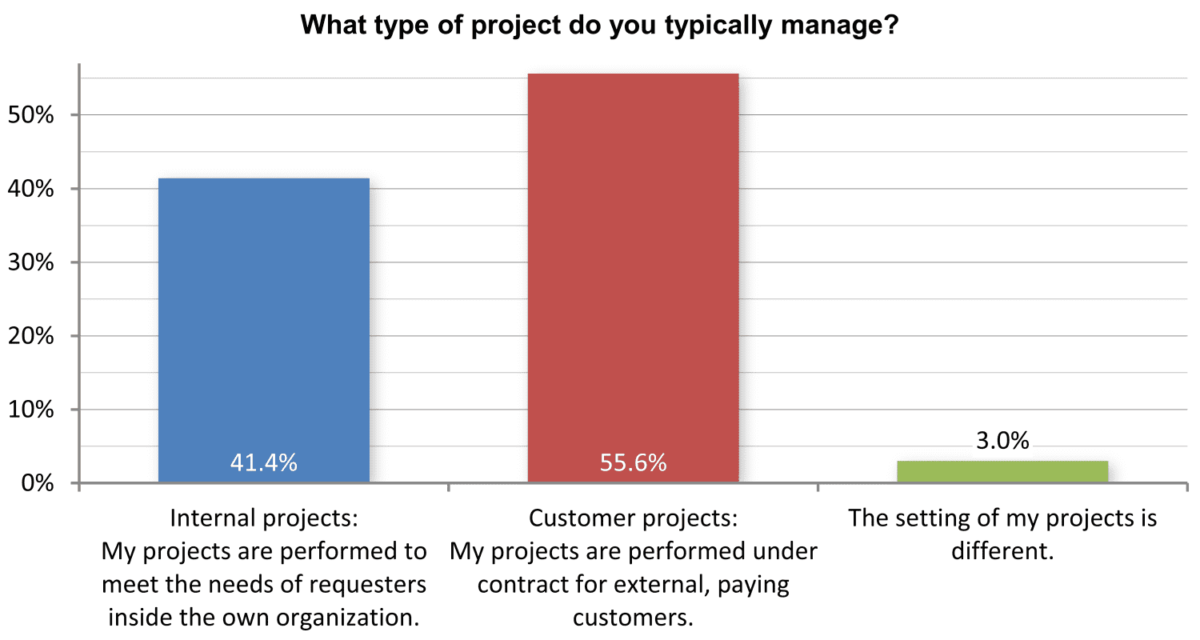
The survey was performed in July and August 2022. It collected 536 responses during that time.
In a first question, respondents were asked what kind of projects they typically manage. They answered:
- Internal projects: 222 (= 41.4%)
- Customer projects: 298 (= 55.6%)
- Other settings: 16 (= 3.0%)
Global Results
16 respondents answered: “The setting of my project is different”. As this study focuses on the two main types of projects, they were not further analyzed here.
6 respondents answered that they have zero income from their projects. These respondents are in volunteer projects on a pro-bono basis or have other unpaid assignments. For this study on project managers’ income, they were also not further analyzed.
This left 514 responses for analysis. The results:
- Internal projects: 217 (42.2%)
- Customer projects: 297 (57.8%)
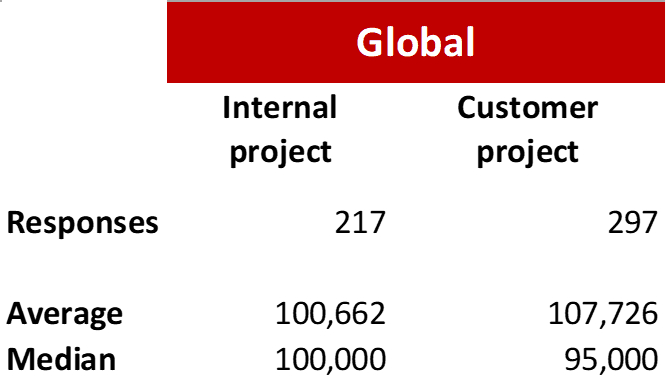
Table 1: Income comparison, global numbers
Regional Results
Digging deeper confirmed the pattern that was familiar from the 2018 survey.
Participants were asked from which world region they came. This allowed drilling down the income comparison.
In high-paying regions like North America and the EU, project managers in customer projects reported higher payments. In medium and low-paying regions, project managers in customer projects reported lower average income numbers than their colleagues in customer projects.

Table 2: Income comparison by regions
Note: A seventh region under review was Australia & New Zealand. Due to the small number of 10 responses, they are not shown in Table 2.

3. Discussion
The numbers in Table 2 confirm the findings from the 2018 survey, reflecting different expectations in world regions, when companies decide to procure project work:
FOR HIGHER PAYING REGIONS:
The dominant driving force for the buyer seems to be the tapping into contractors’ assets, such as:
- Skills and competencies
- Free capacity
- Tangible assets, such as equipment
- Management attention
In order to make these resources available, customers have to pay a high price that will make it worthwhile for the seller to become the contractor.
In such a situation, the Buy option is chosen mostly to get things done by thoroughly competent contractors. The higher salaries these contractors pay reflect their expectations of future project profits.
FOR LOWER PAYING REGIONS:
In the regions where project managers in customer projects earn less than internal project managers, a much stronger consideration seems to be the objective to get project work done cheaply. Here, the contractor must be cheaper than the customer’s internal resources. The price pressure from the customer will then translate into lower earnings for the contractor’s staff, accepting that people will possibly work on the project with lower qualification and motivation.
In such a situation, the Buy option is chosen predominantly to get things done by cheap contractors. The lower salaries paid by these companies rather reflect their actual poor profitability and possibly also their poor liquidity.
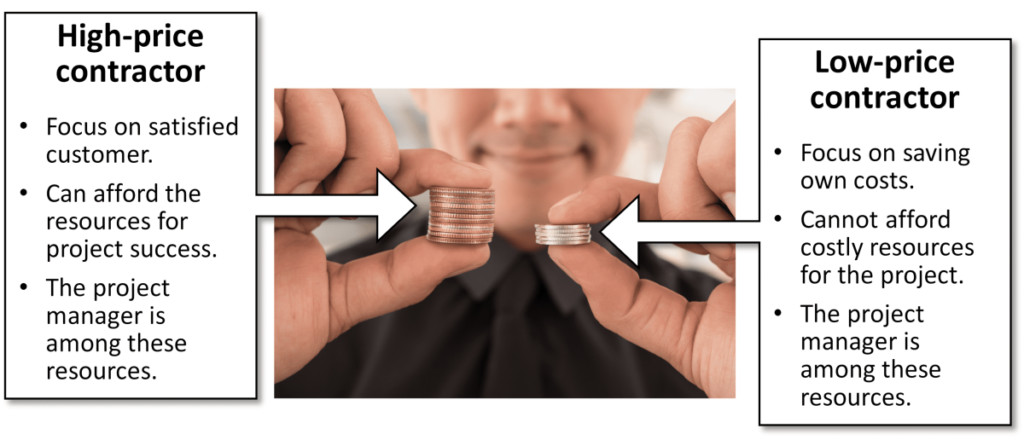

4. More Data
Home Regions
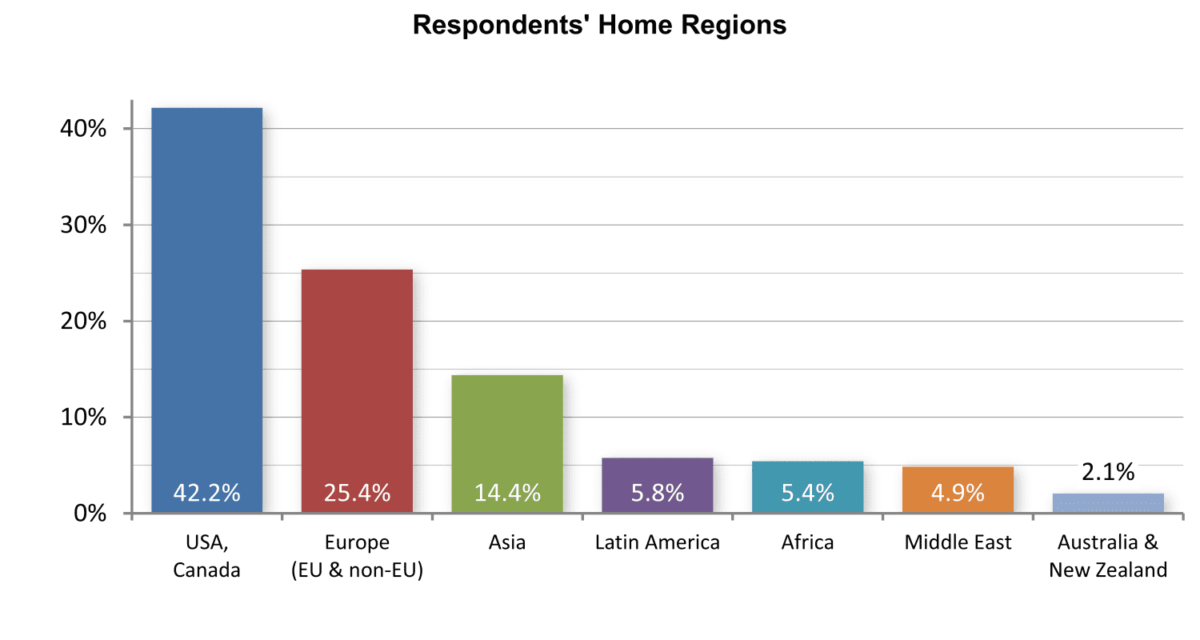
The largest group of survey respondents came from the USA and Canada. The smallest group was from Australia and New Zealand.
Project Size
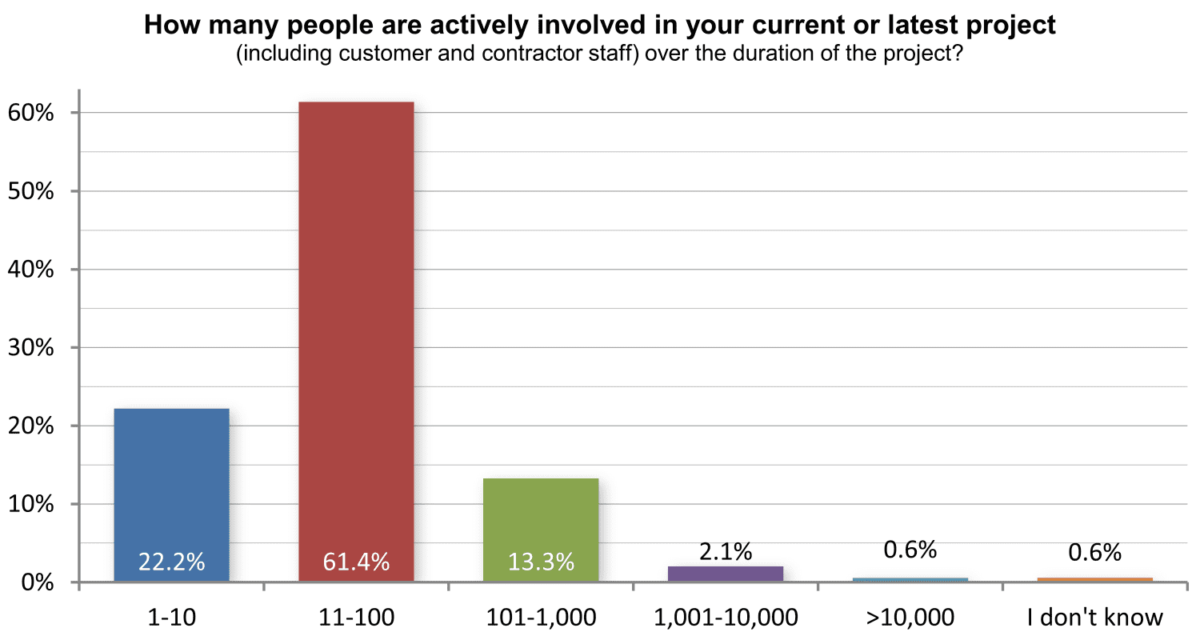
The majority of respondents was involved with projects between 11 and 100 people.

5. Conclusions
On a global level, the average income of project managers in customer projects was insignificantly higher than that of their colleagues from internal projects. Comparing the median values of the two groups instead, internal projects had slightly better pay, as shown in Table 1.
The data above refer to gross salaries, i.e., the money paid by the employer. Participants were members of the social networks LinkedIn and Facebook, who communicated in their profiles and in group memberships where they worked as project managers.

6. Acknowledgement
We are grateful to everyone who spent time filling in the survey form.
A special “Thank you” goes to Cornelius Fichtner and his company OSP International, who activated their seminar students to participate in the survey.

